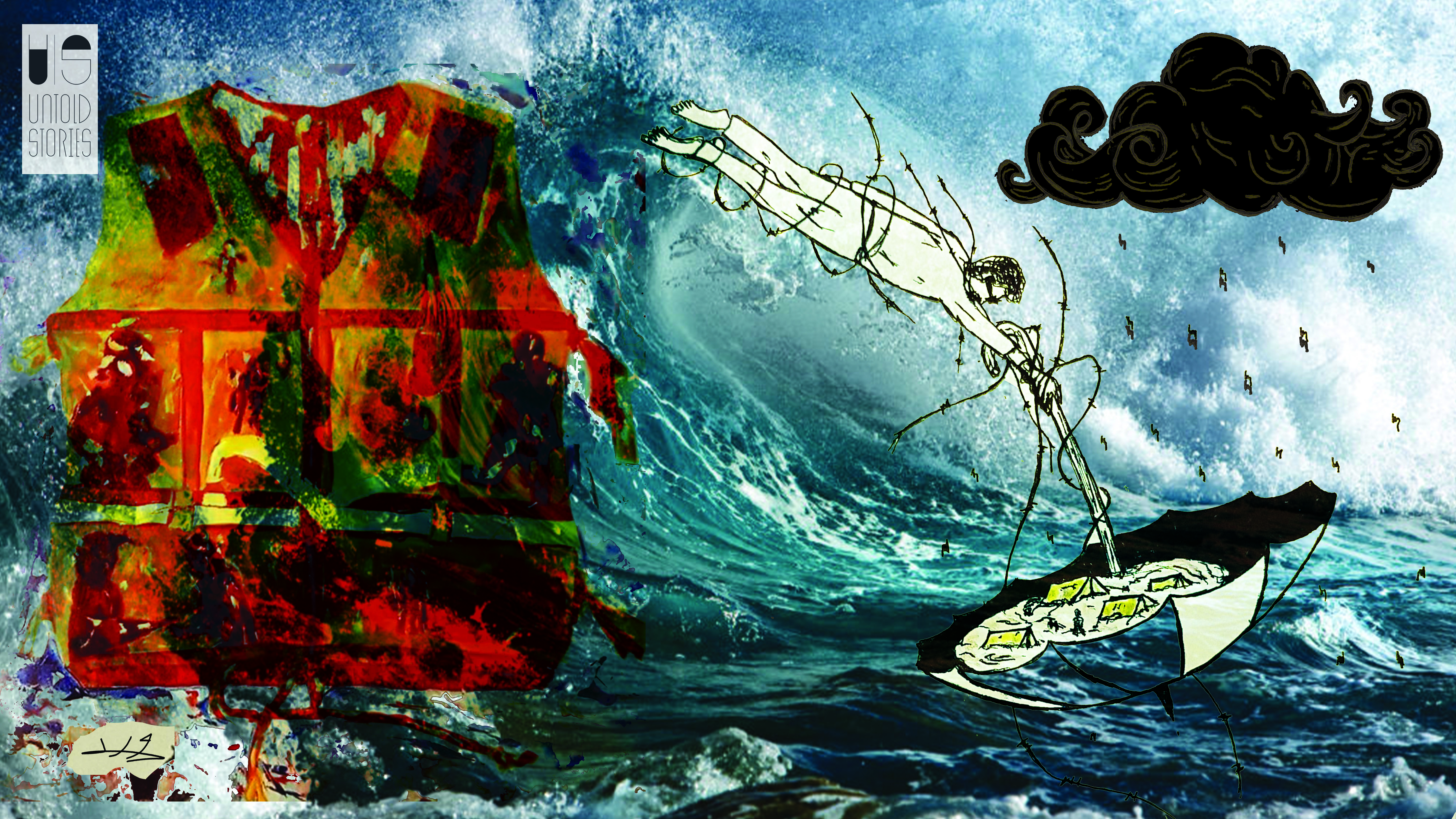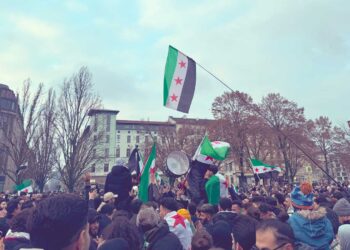Thousands of people have landed in the past few weeks in the Sicilian island of Lampedusa, closer to Tunisian and African coasts than Italian ones. The so-called emergency is created by the Italian government for electoral purposes and more repression.
Last weeks’ scenes of overcrowding in Lampedusa were a show organized by the [Italian] Government, with a double purpose. The first is to accelerate emergency measures aimed at certain immigrants. The second is to reassure the government’s electorate, which is happy with more inequalities – such as those facilitated by the government’s tax reform – and with more repressive measures against the weakest parts of society rather than against major tax evaders or against those who exploit labor [for profit]. In short, this is what has happened in recent weeks in Italy on the migration front and in the life of the government in office. After all, the political fortunes of right-wing and far-right parties throughout Europe rely above all on this: supporting repressive and emergency policies against a racialized part of the migrant population, variously defined as non-integratable, clandestine, African, Muslim, terrorist, or represented as deceived and cheated by traffickers, who over at least the last two decades have been transformed into the real villains [of Italy’s/Europe’s woes], those to be repressed, even when they are simply at the helm of a boat, trying to save their own and others’ lives.
People considered inferior (racialized) are the subject of various policies: of repression, such as those being held in expulsion centers whose detention has just extended to 18 months; of rejection, such as those carried out by the so-called Libyan Coast Guard pursuant to an agreement with the Italian State; or of abandonment, as in the case of people abandoned in Libyan detention centres. For others, salvation is possible, although this salvation is always subordinate and reversible.
Double standards
An eloquent case of this actually-existing necropolitics is furnished by the comparison of the double standard adopted by Italy and the European Union towards people who fled the war in Ukraine and those who fled from other wars or contexts of serious violations of human rights and which are life-threatening. Consider the first 9 nationalities of origin of the people who arrived in Italy by sea in 2022-2023 , which constitute 67% of total arrivals (see Table below): a part came either from full-blown war zones (e.g. Syria and Afghanistan), or from countries experiencing strong military tension (e.g. Burkina Faso), while the largest part comes from contexts governed by dictatorships such as Egypt, Tunisia, Guinea, Pakistan or [in any case countries] characterized by strong violations of human rights, such as Bangladesh. The only exception to this picture is Ivory Coast, for complex reasons (for more on this case, see: The Ivory Coast, in an economic and migratory boom – Vita.it)
Top 9 nationalities of people arriving in Italy by sea, 2022-2023
| 2022 | 2023 (to 15/09) | 2022-2023 | % of total | |
| Egypt | 20.542 | 8.422 | 28.964 | 12,3 |
| Tunisia | 18.148 | 11.694 | 29.842 | 12,7 |
| Guinea | 4.473 | 15.138 | 19.611 | 8,3 |
| Ivory Coast | 5.973 | 14.282 | 20.255 | 8,6 |
| Syria | 8.594 | 5.084 | 13.678 | 5,8 |
| Bangladesh | 14.982 | 7.576 | 22.558 | 9,6 |
| Afghanistan | 7.241 | 7.241 | 3,1 | |
| Pakistan | 3.188 | 6.321 | 9.509 | 4,0 |
| Burkina Faso | 6.803 | 6.803 | 2,9 | |
| Total | 105.131 | 130.620 | 158.461 | 67,2 |
Source: https://www.interno.gov.it/it/stampa-e-comunicazione/dati-e-statistiche/sbarchi-e-accoglienza-dei-migranti-tutti-i-dati; Presentazione di PowerPoint (ismu.org)
Therefore, as of 15 September 2023, in 2022-2023 arrivals by sea from the top 9 countries of origin for which data is available reached approximately 235.000 – roughly 2/3 of total so-called landings, almost all come from war zones or dictatorial states.
Over the same period (April 2022–September 2023), Italy granted temporary protection to 180,677 people from Ukraine (Ukraine emergency. Temporary protection requests dashboard | Department of Civil Protection). This number almost equals those arriving from [all] other [major] war zones or dictatorships [combined]. However, while the former were granted a protected status in line with a decision of the European Council of 2022 (pdf (europa.eu); Fleeing the war in Ukraine: the differential reception of the European Union – by Gennaro Avallone – Effimera), the latter were governed – as has been done for three decades – with a range of repressive measures treating them as a problem to be disposed of and an emergency to be contained. Politicians have put this into practice as best they can, including with laws such as the so-called Cutro Decree and the soon-to-be-published Council of Ministers Decree of 18 September (see Press release from the Council of Ministers no. 50 | www.governo.it). The disparity in treatment [between the treatment of different groups] is evident. It is all too clear that [governing] these disparities are geopolitical interests and color lines that discriminate based on skin. As such, I do not intend to focus on this [aspect], but [rather] on the mechanism of emergency.
The invention of the emergency
Here, evidence clearly tells us that faced with comparable numbers – around 230.000 so-called landings on the one hand, and around 180.000 temporary protections granted to those coming from Ukraine on the other – only the first case is represented as an emergency. By contrast, the case of people from Ukraine is entirely absent from the attention of both mass media and politicians. It is as if no one were arriving from Ukraine: it is simply not discussed, it is not a topic of political, public or journalistic interest. Simply put, [as far as media or politicians are concerned] the question does not exist. By contrast, when similar numbers [of arrivals] attributed, to other populations they constitute an emergency, they provide a reason for urgently-approved decrees, and even for the mobilization of the President of the European Commission, strong words from key Government figures, [not to mention] further deployment of police and military forces by France along its border with Italy (confirming that the European free movement area is valid in a variable way, depending on one’s skin color and geographical origin).
The construction of the emergency is even clearer looking at the numbers of people in Lampedusa in recent days: for example, on 12 September there were 112 landings amounting to roughly 5000 people (Migrants, over 100 landings in Lampedusa in one day. Mayor: “We can’t handle the shock wave” | Sky TG24). There was immediate talk of the island collapsing, [but no mention of the fact] that a [single] ship would have been enough to move these people and avoid their prolonged concentration on Lampedusa, but also forgetting that in the absence of a rescue mission and in the presence of laws that make the operation of NGO ships carrying out rescues at sea [where the Italian government and the EU refuse to do so] may cause such overcrowding. All this would be avoidable if the political will existed to do so; if, however, the political will goes in the opposite direction, then such [‘overcrowding’ becomes a reality]. This is how an emergency is created.
Too many fall into this trap, including the parliamentary left. What must be proposed – and supported through mobilization – goes in a different direction. The sad spectacle organized in Lampedusa demonstrates that the emergency is useful both for electoral reasons – such as the long campaign until the 2024 European elections – and for accelerating repressive laws which are not necessary, and which destroy rights and solidarity. In short, there is no immigration emergency in Italy. Those who govern are inventing it for the purposes of political propaganda both to mobilize what remains of their electoral base as well as a suitably frightened electorate, and to legitimize new laws against migrant people and thus also against all exploited sectors of the population. The path ahead is that of solidarity and easier access to visas in order to move more freely and legally, breaking with the deadly, racist policies that are the hallmark of Europe’s migration policies.
*This article was originally published in Italian here








